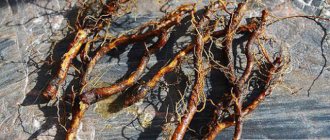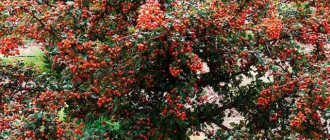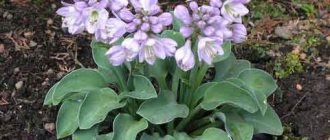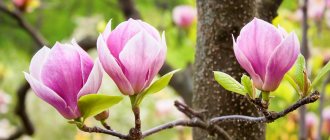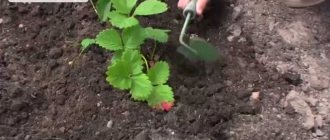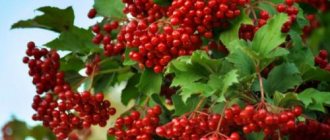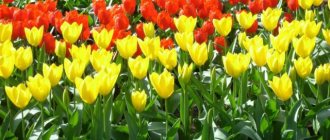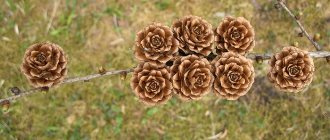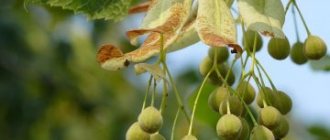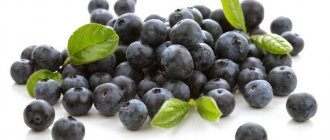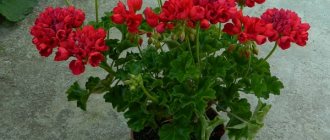Main varieties of sycamore
There are 11 known species of this tree in the sycamore family. These trees can grow for centuries. There are several decorative forms of plane tree:
- pyramidal;
- Suttner;
- variegated;
- grape-leaved.
Plane trees (plane trees) are especially often cultivated in countries with hot climates; these trees provide coolness and welcome shade in the garden from their wide leaves that form a spreading crown. This powerful tree bears multiple nuts as fruit, which break down into many small nuts.
General information
In ancient times, the plane tree bore the name “Eastern Maple” due to the similarity of its leaves to maple leaves. But this is at first glance. If you look closely, the difference is visible to the naked eye. Moreover, the age of Sycamore is several times greater than that of Maple. Rumor has it that he saw dinosaurs, but unlike them, he did not disappear from the face of the Earth.
Eastern peoples call the plane tree Chinara. Many giants were even given personal names, legends were made, and endowed with magical properties. Their image adorns the mosaics of eastern mosques, Iranian miniatures, and wall landscapes. Many peoples worshiped him and considered him sacred. The lovers sought to touch him so that they could carry their love and fidelity throughout their lives.
Description
Belongs to the category of large trees. The height can reach 60 meters, the trunk is 13.4 meters in diameter, its circumference reaches 42 meters.
The oldest confirmed age of Sycamore is 2300 years. The specimen grows in Turkey.
Found on all continents. It grows quite quickly, has a thick crown and a powerful trunk. It is not afraid of severe frosts, but feels best in warm climates. Under its crown, townspeople and rural residents can take refuge on hot summer days.
Flowering begins in early spring. Flowers are pleasing for a short time. Collected in inflorescences of 5-6 pieces, they have a yellow-green or crimson color, depending on the gender. Main characteristics of Platan:
| Family species | Sycamore |
| Growing time | Perennial |
| Vegetation form | Treelike |
| Preferred growing locations | Sunny and open space |
| Average height | 35-45m |
| Peak decorativeness | Spring - autumn |
| Fruit | Nuts in the form of balls |
| Fruit ripening period | All year round |
| Where is it used? | They decorate alleys and squares, park areas, and plant them as hedges. Planting can be either single or group. The bark and leaves have medicinal properties. Unique and durable interior items are made from wood, but not on a production scale. |
How to grow sycamore
To successfully grow a plane tree on your site, you first need to choose the planting site wisely. Active plant growth is observed in places with fairly loose soil rich in essential minerals.
In arid regions, it will be necessary to provide high-quality watering for the tree. High-quality watering will allow the plane tree to stand out in the garden. Sycamore is characterized by rapid growth rates, so during a year of active growing season the tree can grow up to 2 meters.
Gardeners can propagate sycamore with several available options:
- growing from mature seeds;
- ordinary self-seeding;
- seasonal cuttings;
- primary planting of root shoots;
- planting with pegs.
Ordinary self-sowing is the simplest and most natural process, does not require human participation, but does not guarantee the appearance of sprouts at the right time. Therefore, gardeners often prefer to cultivate sycamore from mature seeds. For this purpose, velvet tree seeds should be collected in the fall and stored until spring in a special fabric bag. The seeds should be buried in soil prepared in the usual way.
The primary planting of mature seeds or ready-made seedlings can be carried out not only in spring, but also in autumn. Sycamore is more suitable for places with deep moisture, which is why it can often be found near the banks of streams and rivers.
If you decide to plant a plane tree seedling, you should choose the right sample. For a zone with a cool climate, it is necessary to buy seedlings with increased frost resistance. It is advisable to plant a strong sprout in a well-lit place in the garden. After rooting, seedlings will begin to grow rapidly, so they need to be watered moderately.
Propagation of plane trees using strong cuttings is quite popular among gardeners. To do this, cuttings cut from a strong tree should be placed in a container with water and left in a cool place with an air temperature ranging from 3 to 6 ° C. In the spring, when the buds on the trees in the garden swell, the established cuttings can be planted in open ground.
Other propagation options for plane trees are rarely used due to their low efficiency in the European part of the country.
Plane tree grows without special conditions of maintenance and care. For optimal development, the tree needs sufficient light, moisture and natural heat. In the conditions of the middle zone, only one difficulty arises - the low winter hardiness of the plant. Sycamore can easily tolerate temperatures down to -15°C, but at lower temperatures there is a risk of plant death.
During periods of active growth, the plant needs regular pruning. This is done in order to remove damaged branches that interfere with the full development of the tree, and to give it a decorative shape. The plane tree tolerates the pruning procedure well.
The gardener needs to take care in advance about the successful overwintering of the plant. To do this, you should prepare the material: high-quality mulch, consisting of sawdust and spruce twigs. Dry autumn leaves from the garden will also be a good mulch. Having provided shelter for the winter, you can count on the plane tree adapting to any living conditions, even to conditions of urban gas pollution and other places with poor ecology. Common tree diseases, as well as dangerous pests, do not affect sycamore. Which is very important for successful cultivation.
Diseases and pests
Currently, the number of Platanus is declining. This occurs due to fungal infection of the tree. It all starts with the branches drying out. Then a brown coating appears on the bark. The plant dies. To date, scientists have not found ways to treat this disease, although work in this direction is carried out regularly.
Chinara is also afraid of anthracnose. This is a fungal disease that affects the leaves. At first, some places turn brown, then cracks and grooves appear on the leaf blades. If the tree is young enough, then the timely use of fungicides in the form of Bordeaux mixture and Fundazol will help to cope with the disease.
A harmful insect for Sycamore is considered to be the Sycamore laceweed. Due to their small size, the parasites climb under the tree bark and remain there throughout the winter. As soon as the plant awakens from sleep in early spring, insects begin to feed on the life-giving sap of the tree’s leaves. With a significant number of parasites, almost all leaves turn yellow. Another danger that parasites pose is the transfer of fungal diseases from a diseased specimen to a healthy one. The fungus cannot be treated. To avoid negative consequences, it is necessary to constantly treat young trees with insecticides: Aktara, Karbofos, Aktellik. It is much more difficult to deal with aging plants, since their large size does not allow them to be fully treated with special means. And the insects that have settled under the bark continue to feed on the life-giving moisture of the plants.
Varieties of sycamore
Today there are 10 known species of sycamore that grow all over the world. The following are considered the most popular:
- Ordinary. It is a hybrid of western and eastern species. It grows up to 40 m. It has a wide trunk and a rounded crown. Most common in Europe and America.
- West. Grows in North America. Refers to deciduous trees. Height - no more than 35 m. Withstands frosts down to -35°C. It needs constant watering as it does not tolerate drought well.
- Oriental. Grows in the Caucasus. Long-lived and growing quite quickly. The fruits are edible, they are called “planariki”.
- Sycamore maple leaf. An unusually large and majestic tree that grows up to 30 m. It can be grown in temperate climates and tolerates low temperatures well. A distinctive feature is the peeling of the bark of different sizes, resulting in the appearance of spots.
Brief characteristics of Sycamore species
The genus Chinara has only 10 species, but there are fewer common ones. These include:
- Oriental plane tree. Distributed in the Balkans and Italy, Central Asia, Asia Minor and the Mediterranean. The plant can often be found not far from rivers, lakes, and streams. It grows quite quickly, easily tolerates the highly polluted air of industrial cities, and develops in alkaline soil. In a short period of time it reaches a height of 30 meters. Sometimes there are specimens 50 meters tall. They have powerful trunks with uneven, knotty outlines, the diameter of which reaches 12 m. When they reach maturity, the trunk becomes hollow. The branches are spreading and loose. The crown is wide. The bark is light gray or gray-green. Gradually it peels off and falls off in thin strips. The leaf blades are elongated and jagged. The fruits are spherical. In the East they are used for food. They are called "chinariki".
- Sycamore Western. Widely distributed in the North Atlantic Territories, in close proximity to the Atlantic Ocean. Often found along small and large natural waterways. Loves river valleys and floodplain soils. Reaches a height of 45 meters. It is a deciduous species, the bark is light green. Has increased frost resistance. Adapts to any soil. Does not tolerate heat and drought well. Afraid of pests and diseases.
- Sycamore maple leaf. Other names are London Plane or Common Sycamore. It turned out in the process of crossing the Western and Eastern Sycamore. Is a hybrid. Grows up to 40 meters. The crown is wide and low. The branches are straggling. The trunk is highly branched. The leaf blades have five blades. When propagated by seed material, it acquires the properties of both the western and eastern parent. To preserve hybrid data, it is worth resorting to propagation by cuttings. It is considered the most frost-resistant subspecies, therefore it is widespread in America and Europe, Belarus and Russia. The crop has been grown since the mid-17th century. Decorative forms used in gardening are variegated (the leaves are tinted yellowish), pyramidal (the crown resembles a high pyramid), Suttner (beige spots are visible on the leaves) and grape-leaved (the leaves are very similar to grapes).
Growing from seeds in a pot
This method is the most popular, since in this state the seedlings can be kept in any convenient place, providing them with constant care and supervision. This will allow you to immediately get rid of the problem without losing the seedling if any developmental deviations occur. For the result to be positive, you need to know some nuances.
Requirements for planting material
Having decided to grow by seed, it is important to know that if all storage rules are followed, the seeds retain the ability to germinate throughout the year.
Seed preparation
Before sowing, the seeds must be hardened and disinfected. To do this, the pre-collected material is placed in a cotton bag and deepened 50 cm into the ground. These manipulations are performed at an air temperature not lower than +10°C. If the temperature is lower, you need to prepare a container, fill it with clean sand and place a bag of seeds there. The container is placed in a basement or other place where the temperature does not fall below 10°C.
Sowing depth
After hardening is completed, when the temperature begins to rise, the seeds are removed and prepared for planting. To do this, they are soaked in water for several days, and then the hatched seeds are planted in selected containers in pairs to a depth of 2 cm.
Conditions and care of crops
For good growth, the temperature in the room where the containers with seedlings are located should be at least 25°C. You need to water as needed, making sure that the soil does not dry out. During the entire period of seed germination, it is important to ensure that direct sunlight does not fall on the ground and sprouts.
It's Leo!
The sycamore is a huge, powerful tree with magnificent bark, large leaves and unusual fruits.
An ancient look that looks wonderful anywhere and attracts the attention of passersby. Many call it the "naked maple" because of its maple-like leaves (sycamore occidentalis and sycamore maplefolia) and the "naked" effect of its peeling bark. However, there are those who know what kind of tree this is and many of them want to grow it for themselves. Moreover, getting the “ball” fruit is not such a big problem - they themselves fall to the ground throughout the year. However, few people succeed in this and I have heard and read too many myths on the topic of growing sycamore from seeds. I guess I can’t even find anything else to compare it with in terms of the number of fables. Now let’s look at all the fables, literally separate the “wheat from the chaff”, sow the first and throw away the last!
So, you picked up a nice “ball” under the plane tree. What to do with it now and how to plant it? Myth #1:
You need to plant a ball and bury it to a depth of about 30 cm. I don’t know who came up with this nonsense and why, but apparently someone liked burying sycamore balls and decided to share this joy with others.
Myth #2:
The ball needs to be broken and the fluff removed from the nut. It needs to be stratified and planted (it seems there was something about 30 cm there too). In general, without telling too much, the result will be the same as in the first case.
Why are these “myths” such myths? The first is a myth, because the seeds that need to be sown superficially are buried to a depth of 30 cm and they physically do not have enough strength to germinate through such a layer of soil. The second is a myth, because the seeds were thrown away, and they decided to sow an analogue of what will remain of a dandelion if the seeds are blown off it. Now, look at the photo below and in order: we took the fruit “ball” (far left), crushed it a little in our hands and got seeds (in the middle) and the thing to which they were attached and which we called “nut” (right)
Once again, remember: this is a dummy! Just normal nothing. It is not sown!
But this is being sown! Soak the seeds, that very fluff, in water for two days (change the water). You can soak the entire ball the first day to make it easier to separate the seeds from the core. Afterwards, we sow superficially, ON well-watered soil (you can sprinkle it with a little soil) and cover with film until shoots appear. The photo shows seeds that were germinated in a damp cloth. There is no need for this - I needed to do it so that there was something to photograph (they are not visible on the ground). A photo proving that the “fluff” is actually seeds and they do sprout!
Propagation by cuttings
This propagation method is difficult, but possible. Preparations are carried out as follows:
- At the end of leaf fall, cuttings 40 cm long are cut, the thickness of the branches should be at least 2 cm.
- Collect them in small bunches and place them in a bucket of water.
- Place it in a cool place until spring.
- After the buds swell, the branches are planted in a permanent place.
- Deepen the cutting to 2/3 of its length. The ground part is tilted 45°.
- Water thoroughly and wait for rooting.
Use in landscape design
Due to its incredible size, Chinara is mainly planted to obtain significant shade on the site. If the private property is impressive, then the trees are planted in such a way that a recreation area with a gazebo, lawn, benches, and playgrounds can be located under them.
As a rule, young plants form a hedge. Considering that Sycamore easily tolerates excessive air pollution in large cities, it is mainly planted in parks and squares as a tapeworm.
Application of plane tree
Previously, plane trees were used only to create shade under the scorching rays of the sun. Today its wood is valued for car interiors, furniture and many other items, and even as a medicine in folk medicine.
In landscape design
Sycamore is used to decorate parks, gardens and public gardens. It not only creates a large area of shade that forms under its crown, but also decorates any area. The main thing when choosing a species is to compare the size of the land and the future height of the tree.
In folk medicine
Chinara is used as a hemostatic, analgesic and anti-inflammatory agent. For example, a decoction of the roots is used as a remedy for diarrhea. To do this, you need to take the bark of young tree trunks. An infusion of leaves is used for conjunctivitis. Let's look at several recipes that describe the use of oriental plane tree:
- To stop bleeding, 10 g of pre-crushed roots are poured with 100 ml of boiling water. Place in a water bath for 20 minutes. After time, filter and add water to the original volume. Take the resulting product 30 ml several times a day.
- The following composition is prepared as an anti-cancer agent: 10 g of ground bark is combined with 100 ml of boiling water. Leave for 2 hours and then filter. Take half a glass three times a day.
- For various intestinal infections, take 150 ml 3 times a day of the following remedy: 10 g of bark, 10 ml of vinegar and 150 ml of water, mixed. Boil for 5 minutes, then leave for 60 minutes and filter.
- For eye problems, prepare a remedy from 30 g of dry pre-crushed leaves and 300 ml of boiling water. Mix everything and leave for 2 hours. After time, filter and use for washing.
After reviewing all the information offered, everyone decides for himself whether he wants to see a beautiful plane tree on his site. As you can see, it does not require special care and grows almost independently.
Uses of sycamore foliage
The foliage of this tree is endowed with healing properties. Its bark and root system have the same qualities. The bark contains many useful substances - triterpenoids, sitosterol, but the leaf part contains flavonoids, phenolcarboxylic and caffeic acid, cyanide, anthocyanins, etc.
Plane fruits are rich in sitosterol, and they also contain aliphatic alcohols with their multiple derivatives. How are they medicinal? Let's look at some brief examples:
- If you prepare a decoction based on sycamore components, you can use it as a hemostatic agent. To do this, take crushed sycamore roots - 20 grams, boiling water - one glass. Keep the broth in a water bath for 20 minutes. Leave for half an hour. Take as follows: 2 tbsp. l. drink 3-4 times during the day;
- In areas where snakes are found, decoctions are used for snake bites. The infusion is prepared in the same way;
- When applying homeopathic treatment against cancer, decoctions from the bark of young plane trees are used. Leaf infusions with a small amount of vinegar are used in the treatment of dysentery, indigestion, toothache;
- An infusion prepared from the leafy part of the plane tree can be used for eye diseases, for example, conjunctivitis, blepharitis.
People living in Western Europe still use the leafy part of the plane tree as a substitute for tobacco products.
Plane trees are majestic and aristocratic!
In pre-glacial times, plane trees were widespread throughout Eurasia, North and South America, from the Arctic Circle to the equator. Today plane trees are relics of the Cretaceous and Tertiary periods; there are only 9 species in their genus. These days they are widely cultivated, reaching as far north as Scotland and the Baltics in Europe. Plane trees are very powerful, large (up to 55 m in height), powerfully built trees; in the USA, among deciduous plants, they are second only to the tulip tree.
The thickness of the trunk of the largest plane tree reaches 13.4 m, which is 2 times more than that of the largest sequoia (although, most likely, these are several trunks fused together into one tree). The appearance of plane trees is sculptural in antique style, as if carved from stone, to match the period of the ancient Greek gods, when plane trees became widespread in culture. This comparison, in addition to the size of the tree, is also facilitated by the color of the bark - after annual peeling, it acquires a white bone or marble color. The effect of the plane tree’s power is also enhanced by a truly ascetic lifestyle - plane trees are extremely resistant to unfavorable conditions, therefore in urban landscaping they are replacing less resistant maples, ash trees, lindens, poplars and chestnuts. The only limiting factor for plane trees is long frosts. Otherwise, plane trees are considered extremely valuable decorative and ornamental species. Everything about them is beautiful: the color of the trunk and the spreading of the branches, the shape of the crown and the appearance of the leaves, the neatness of flowering and long-lasting fruits. In addition, plane trees live up to 2500 years. In the Bible, old plane trees, along with cedars, are revered as trees of God.
Description. The most widespread in European culture, the most hardened and hardy is considered to be the maple-leaved plane tree, or hybrid (Platanus acerifolia). The species is the result of crossing the American Western Sycamore and the European Oriental Sycamore, or plane tree. Having inherited the best qualities of its parents, it surpassed them in growth rate, seed reproduction, frost resistance and endurance to adverse conditions, retaining all its decorativeness and durability. Sycamore maple-leaved tree is a deciduous tree up to 40 m, with slightly sagging lower branches. Like the oriental sycamore, the bark separates in large thin plates, exposing the inner white-gray layers. The leaves are slightly larger than those of the European parent, reaching 20 and 25 cm in length and width, respectively. Leaves are 5-7 lobed, carved, light green, felt-pale below, young leaves are heavily pubescent on both sides, mature leaves are smooth, glossy, with only sparse pubescence below. In autumn, the leaves turn yellow-pink with a golden tint. The inflorescences are spherical, up to 3 cm, dioecious, hanging on long pedicels. Male inflorescences are yellowish, female inflorescences are pinkish. The plane tree blooms with leaves blooming in May. The ball-shaped fruits ripen in October and hang on the tree until spring, decorating the branches like New Year's toys. Seeds in the form of skittles with an umbrella-parachute, length up to 5 mm. The seeds of the maple-leaved plane tree ripen even in Central Europe; even lonely trees have good seed germination.
Tell us about plane trees
Good day, Natalia! Thanks for the interesting question about plane trees. So, first things first. There are only 6 species in the genus plane tree (Platanus), of which 2 species are most common in the culture of the southern coast of Crimea. This is the eastern plan (P. orientalis) and the western plan (P. occidentalis), but even more often in the landscaping of the Crimea, a hybrid plane tree is used - maple-leaved plan (P. xacerifolia, P. xhispanica). The eastern plane tree, or plane tree, is a large deciduous tree with spotted bark (greenish spots on a gray background) due to peeling blades, up to 30 m high and wide. It is native to South-Eastern Europe; widespread in Western Asia. The modern natural range of the species: the Balkan Peninsula, the islands of the Aegean Sea, the eastern coast of the Mediterranean Sea, the islands of Cyprus and Crete; the cultural range is very wide - from South-Eastern Europe to Kashmir. The leaves are 5-lobed, up to 25 cm long. Capitate fluffy reddish spherical female inflorescences of 3-7 on a common stalk are arranged clearly. The fruits are conical, pubescent achenes; ripen in September-October. Western sycamore or sycamore - this species is slightly lower and slimmer, up to 25 m high and up to 20 m wide. It is native to the east and north of North America. The trunk is the same spotted, gray. The leaves are often 3-lobed (they are more pointed, this is how Olga Dmitrievna Shkarlet taught me to identify plane trees by their leaves), up to 20 cm long. The fruit is spherical, also up to 2.5 cm in diameter, and remains on the tree from autumn until spring. On the southern coast of Crimea, an alley of western plane trees has been preserved, which can be seen by getting off at the Pushkino stop on the Simferopol-Yalta highway. Sycamore maple leaf or Spanish sycamore . This is a hybrid between the eastern and western parts; it was discovered in one of the parks in London in the UK. It is up to 30 m high and up to 20 m wide. Its trunk is also exotic: with gray and whitish-cream spots. The leaves are 3- and 5-lobed, up to 35 cm long. The fruits are also spherical, with a diameter of 2.5 cm. It has spectacular variegated forms. Thanks to their huge spreading crowns, plane trees have always been valued in southern countries, where they were planted near ponds, houses, and in recreation areas to create a cool, comfortable recreation area. In Crimea, plane trees were brought to the Nikitsky Garden in the first years of its existence, from where they spread to other parks of the South Coast, including Gurzufsky. All plane trees grow quickly, especially when young. In the Southern gardening zone, they can withstand temperatures down to -20-25°C, reach large sizes with a powerful root system, and live long. Plane trees are photophilous and grow better in fertile soils with mandatory watering in hot, dry summers. They reproduce well by seeds and cuttings; produce stump shoots. These are wonderful tapeworms that will create an excellent relaxation area under their crown.
Now about specific plane trees. Plane trees in the territory of the Bakhchisaray palace and park complex (Crimea, Bakhchisaray). According to our inventory of green spaces in this area in 2013, there were no plane trees. Most likely, you meant the huge poplars in the embassy courtyard, which had to be removed by 2013 due to accidents and dryness.
Their trunks were previously braided with Crimean ivy like this, as you can see in the photo the ivy is braiding a felt paulownia tree.
The oldest tree on the territory of the complex is considered to be the centuries-old Girey mulberry.
Platan A.S. Pushkin on the ancient territory of Gurzuf Park (now the territory of the Pushkino sanatorium).
This specimen is a memorial tree of the oriental plane tree, planted by the Kyiv governor, owner of the Gurzuf estate I.I. Fundukley in 1838 in honor of the first anniversary of the death of A.S. Pushkin. It is located not far from Richelieu’s house, near the stele-monument to the poet. The approximate age of the tree is more than 175 years. The height of the tree is 20.5 m, the circumference of the trunk at a height of 1.3 m is 400 cm, the crown parameters are 24.5 x 22.0 m. The vitality rating is 5 points (excellent).
Plane trees in the Nikitsky Botanical Garden . Near the copy of the Bakhchisarai fountain in the Lower Park of the arboretum grows the oldest specimen of the oriental plane tree.
Sycamore - a long-living tree: planting, care and cultivation of plane trees
Plane tree (plane tree) is a deciduous ornamental tree of the Platanaceae family.
It has a powerful trunk, the circumference of which can reach 18 m, and the height - 60 m. Translated from Latin, “platos” means “wide”. The plane tree is widespread: it is found in Europe, Asia and America. Chinara is a long-lived tree; specimens over 2 thousand years old grow in the Caucasus. After planting, it grows very quickly during the first few years and does not require much care. It propagates by root shoots, but is more often grown from seeds. Several varieties of plane tree grow in Russia.
Sycamore tree, buy maple-leaved sycamore in Kyiv, price - Plant Club
Sycamore is a giant tree from the plant world. The ancient Greeks called it “broad”, which is where the name of the tree comes from in Latin. Even young plane trees can be several meters in girth, and there are whole legends about the thickness of old trees. The height of an adult plane tree can be 50 meters or even higher. It’s hard to remain indifferent when you meet such a giant along the way. But in small private households you can not often see a plane tree. Buying it is not a problem, but before buying you need to consider whether there is enough space for it on your site.
Varieties of sycamore
There are about 10 known species of sycamore that grow throughout the world.
The common sycamore is a hybrid of the western and eastern sycamore. Its height reaches 40 m. It has a wide trunk and a rounded crown. Easy to propagate and grow quickly. Distributed in America and Europe. Cultivated since the 17th century. The most popular decorative forms:
16 excellent varieties of plums for the Moscow region
- pyramidal;
- variegated;
- Suttner;
- grape-leaved.
Western sycamore is a deciduous tree native to North America. Its height does not exceed 35 m, the bark is light in color. Frost-resistant hybrid, capable of withstanding frosts not lower than -35 degrees. It is undemanding to soil, but needs regular watering because it does not tolerate drought well.
Oriental plane tree - plane tree . A fast-growing tree, mainly growing in the Caucasus. Is a long-liver. Its fruits are edible, and they are called “chinariki”. The tree's seeds remain viable for one year if properly stored. Less frost-resistant than P. vulgare and P. occidentalis.
Planting seedlings in open ground
Planting seedlings in the ground does not require compliance with any requirements. Sycamore is unpretentious to soil maintenance, and this makes it an easy plant to grow even for novice gardeners.
Optimal timing
Seedlings can be planted in spring and autumn. Regardless of the time of year, following all the rules will allow the tree to fully take root. The main thing is to remember that in the spring it is recommended to plant in dense soil, and in the fall, on the contrary, in loose soil.
Selecting a location
It is not recommended to plant plane trees close to buildings, as the powerful root system can damage communications and even the foundation. The land should be located in an area where there is a lot of light, since the tree is light-loving.
Read also: Gravilat: growing from seeds
Care Tips
In order for the plane tree to grow normally and delight with its beauty, you need to follow some simple rules of care, which include moistening the soil, applying fertilizers, pruning excess or damaged branches, and even creating conditions for wintering.
Moisture and light are the main requirements of this plant. Rational watering sets it apart from other inhabitants of the garden. In dry times, the amount of water should be greater. Only in this case will growth not slow down and the leaves will be green.
Mineral nutrition for these giants is important only at a young age. This should be resorted to only when the soil does not meet the requirements. Well-aerated substrates rich in mineral and organic elements are introduced into the ground. The ideal option is to use universal complex fertilizers; the main thing here is not to overdo it.
Western sycamore and other species are quite thermophilic, however, they also tolerate cold well. To obtain a tree with a spherical crown, pruning is required, even of large branches if they stand out from the overall picture.
For a successful wintering of a tree, it is important to take care of the mulch, which can consist of pine branches, sawdust or leaves. They are poured around the tree trunk, creating a mound of up to 30 cm.
Planting and care
Tree planting is carried out in spring or autumn. Sycamore prefers sunlight, warmth and regular watering. Meanwhile, the tree is completely unpretentious to the composition of the soil.
Advice. But still, plane tree will grow more actively in loose soil rich in minerals with abundant watering. In dry times, the amount of watering should be increased.
In warm regions, eastern sycamore is planted along water sources.
The tree can be pruned both to remove damaged branches and for decorative trimming.
Not all types of plane trees are equally frost-resistant. Therefore, it is worth preparing them for wintering. To do this, the roots need to be mulched with pine branches, sawdust or leaves. Chinara adapts perfectly to the environment; it even adapts to urban polluted air.
Flower bed design. TOP 10 simple and effective techniques
Sycamore is not susceptible to attack by pests, and diseases also do not affect it.
How to properly plant and care for a tree
These trees are planted in autumn and spring. Chinara will grow well in sunny areas. It is a warm and moisture-loving tree. But at the same time, plane tree does not require any special soil.
Advice! But if you want the tree to grow better, plant it in an area with loose, mineral-rich soil, which should be regularly watered abundantly. With the onset of intense summer heat, increase watering.
In order to enjoy plane trees in central Russia, you need to find species that best tolerate frost. In the southern regions, it is best to plant trees near bodies of water.
Regular pruning is essential for the tree. Thanks to this procedure, you can get rid of damaged shoots. You also need to trim the crown in order to give it a decorative look.
Sycamore does not need mineral fertilizers. Of course, a young plant will respond well to such feeding, but there is no need to over-saturate the soil with minerals. Chinara feels great if the soil is drained and can allow oxygen to pass through.
How does one cope with winter?
With the onset of winter, almost all varieties, shedding their foliage, still remain beautiful and do not lose their unusualness. The tree trunk with its knots visible also looks unforgettable. The bark peeling off in uneven plates reveals all the mystery of the tree.
Among the many varieties, there are also varieties that do not tolerate frost well and need to be prepared for wintering. Using pine branches, sawdust or leaves, mulch the plane tree roots. This is a tree that can easily adapt to any place and get used to even polluted oxygen.
Reproduction
Many people wonder how to grow a sycamore tree. There are several options for growing this long-lived plant.
- Self-seeding
- Growing from seeds.
- Cuttings.
- Planting root shoots.
- With pegs.
The first option is common in nature, when the process occurs without human intervention. The most popular method of propagating sycamore is considered to be growing from seeds . To do this, velvety nuts are collected in the fall, then placed in a fabric bag and buried in the ground. The temperature should be from 0 to 10 degrees. This procedure is called vernalization - hardening and disinfection. After this, the seeds can be planted in separate containers with drainage. The seedlings will grow very quickly. Moderate watering during their growth period is very important.
Another popular method of propagation is cuttings . The cuttings are placed in a container with water and sent to a cool place where the temperature varies from 3 to 6 degrees. In the spring, after the buds swell, the cuttings can be transplanted into open ground.
The remaining options are used a little less frequently, because they are not as effective as the seed method.
Rules for propagation by seeds
After collecting planting material, it must be placed in a cool and dry place. Such material should be stored for no more than one year. Otherwise, the germination rate will be reduced to zero.
Seeds are sown in open ground either in spring or autumn. Autumn planting requires a seed depth of 50 cm. But amateur gardeners prefer to initially germinate seeds in containers with good drainage. This will make it possible to constantly monitor and care for the seedlings.
Before planting seeds in the ground, you must take the following steps:
- harden the seed material and disinfect it. To do this, use a cotton bag, as mentioned earlier;
- if the temperature outside is below +10 degrees, then you should place the seeds in a cotton bag and dig them into a container with river sand, which you place in the basement or on a glazed balcony.
As soon as warm days arrive, the seeds are removed from the bag and prepared for planting. To do this, take a container, pour cold water into it, and place seeds there for germination. You can add a special solution to the water to stimulate root formation (heteroauxic acid, sodium humate, zircon). You can resort to using a weak solution of potassium permanganate, in which the seeds should spend about half an hour.
As soon as the first green sprouts appear in the seeds, you need to take containers and fill them with peat and sand soil mixture. The seeds sink to a depth of about 20mm. The containers are covered with polyethylene film and placed in a room with a temperature of about +20 degrees. Until young growth appears, the soil must be ventilated, slightly moistened, and protected from direct sunlight.
As soon as the young shoots grow a little, they are picked and transplanted into separate containers. The quality of the substrate must be maintained. When warm temperatures are reached in the open air, the seedlings can be planted in open ground in the chosen location. Young seedlings grow so quickly that after a couple of years their height can exceed half a meter.
Practical video on planting sycamore seeds:
Application of plane tree
Previously, the tree played the role of a piece of paradise in desert areas. Under its spreading branches one could hide from the scorching rays of the sun. Plane tree wood is highly valued; it is used for various purposes: decorating car interiors, making furniture, etc.
Chinara is also used as a folk medicine. It has hemostatic, anti-inflammatory and analgesic properties. In some recipes it was used for reptile bites. In Europe, plane tree was smoked as tobacco. The leaves and bark of the tree are used for various lotions.
In landscape design, plane trees are planted to decorate parks, gardens and public gardens.
Sycamore is a tall, long-living plant. An unpretentious tree. There are a large number of ways to reproduce it. But growing from seeds is still considered the most effective. Loves sun, warmth and moisture. Mainly grows on fertile soils. It is winter-hardy, but needs to be insulated for the winter, so most species grow in the southern regions.
Planting frost-resistant plane trees: video
Where is plane tree used?
This tree once served as an excellent shelter in the arid desert. Plane tree wood is very valuable and thanks to it you can create an unforgettable interior in a car and make chic, durable furniture.
In Europe, plane tree foliage was used as smoking tobacco.
Thanks to the spreading dense crown of the tree, in the Far and Middle East and the Balkan Peninsula, the tree served as an excellent escape from the heat. To do this, it was planted next to houses, temples and wells.
Plane tree is also used in the landscape and serves as an excellent decoration for park areas, garden plots and is often planted along roads.
Growing oriental plane tree from seeds video:
Sycamore tree - care
In order for a plant to please with its size and appearance, it cannot be ignored. Like any other tree, the plane tree responds very well to regular and proper care. It includes:
- Periodic pruning to make the tree more decorative and remove old or broken branches.
- Mulching done in a timely manner to prevent freezing during the cold season. For this purpose, leaves, sawdust, and branches of coniferous trees are used.
- Regular treatment against ticks and other parasites that can harm the crown and bark. Spraying is carried out in early spring and autumn before the onset of severe cold.
- Abundant watering is especially necessary on hot days. Newly planted seedlings need daily watering for better rooting.
- Annual feeding with mineral fertilizers containing phosphorus, nitrogen, potassium.
Sycamore tree - propagation
Many people can plant plane trees on their plot, so interest in growing methods does not decrease. Gardeners are interested in learning how to grow a tree from the sycamore genus. This can be done in different ways:
- Growing from seeds
is the most common method of propagation. The seeds collected from the fruits are stored in a dry place, and before planting, they are soaked in warm water for several hours. The seed is buried in a hole to a depth of about 10 cm, watered with water and mulched. - Cuttings
are a method in which the branches are soaked in water and then planted in a permanent place. This is best done in the spring. Planting is carried out in light fertile soil with abundant watering. Subsequently, the seedling is moistened daily. - Rooting of shoots
is carried out in the spring, choosing for planting only branches with a powerful root system. The plant should not be deeply buried; plant it in a well-drained hole with further watering.
What is a sycamore tree?
It is impossible to determine exactly where this gigantic culture came from. It is only known that the sycamore tree is a plant that has existed for many centuries. They know it under the name plane tree. It is impossible to meet the plant in the wild in Russia, but in parks and arboretums their appearance creates unforgettable beauty of landscapes. The plane tree grows in Western Europe, North America, and Asia Minor. In the Caucasus there are specimens that have been growing for about two thousand years. The age of some representatives can reach more than 2 thousand years.
What does a sycamore tree look like?
When studying what kind of tree a plane tree is, pay attention to its characteristic features:
- The trunk height is up to 60 m, in diameter they can reach 6 m.
- Branches extending from the trunk at right angles, with the lower ones strongly inclined to the surface of the earth.
- The leaves look like maple. Their average size is about 13 cm, and they have blades.
- The flowers can be colored bright red or yellow. The tree only takes a few days to decorate.
- The fruits resemble small nuts.
- The bark of the trunk tends to crack and fall off, leaving a mosaic pattern of yellow and green shades.
